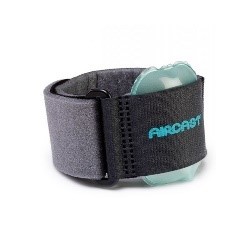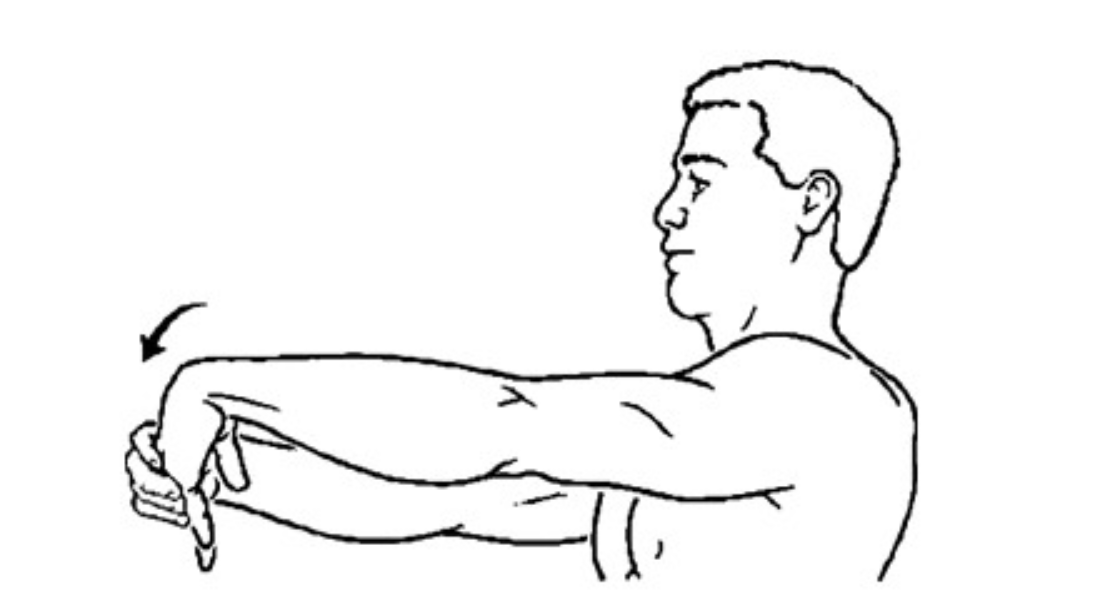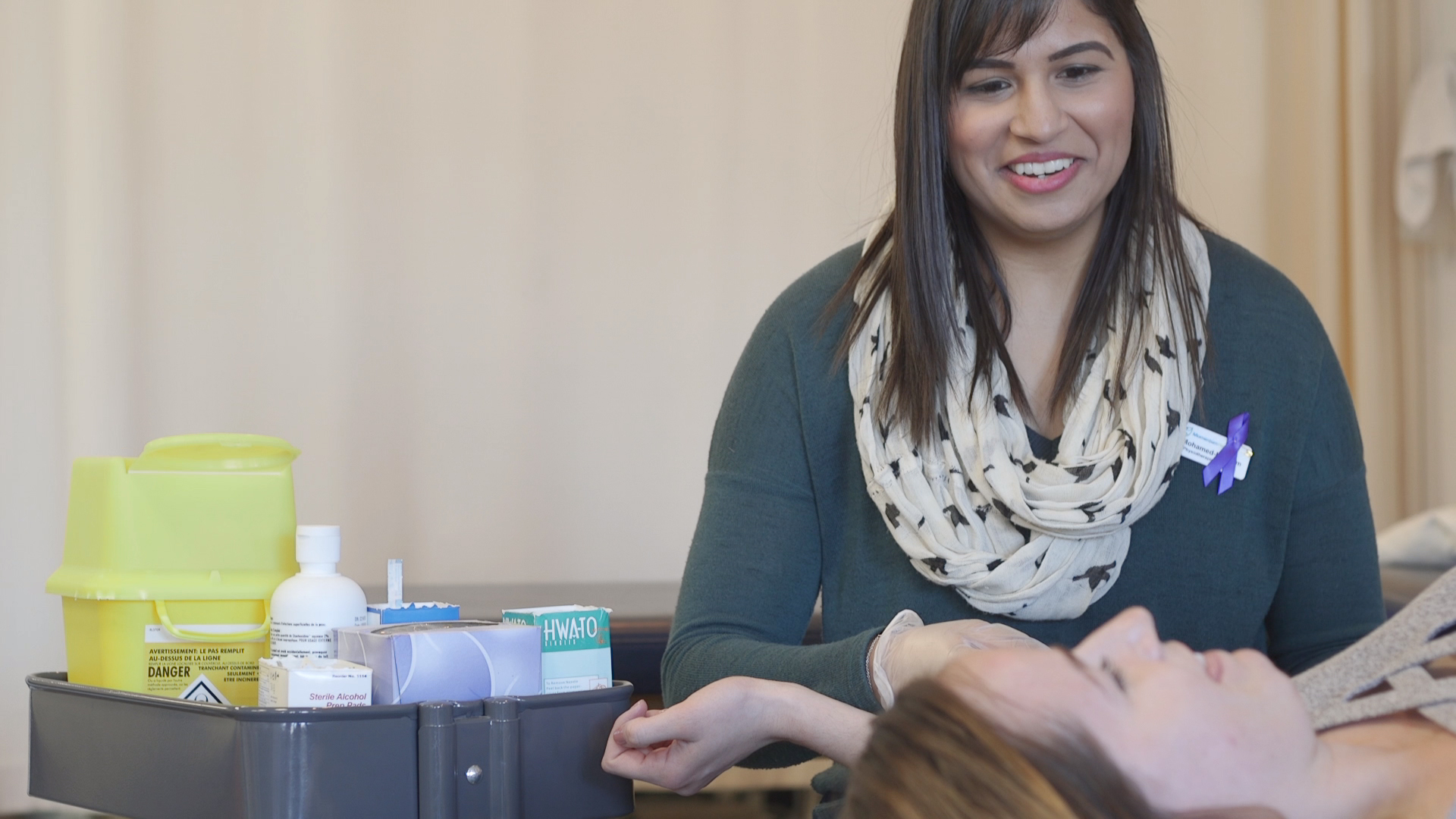How To Conquer Tennis Elbow
Anyone who knows me knows my love for all things winter – snow, ice, fun hats and scarves, outdoor activities, holiday decorations, yummy treats; the list goes on and on. What’s not to love?
That is, unless you’re dealing with tennis elbow (also known as lateral epicondylitis if you’re talking fancy medical lingo). To someone dealing with this condition, winter just means more aggravation of your injury with activities like shoveling, cooking, baking, even wrapping presents can be painful.
So, what is tennis elbow? Here’s some background info – the majority of the muscles in your forearm are responsible for moving your wrist/hand and fingers. These muscles have a common attachment site near your elbow; when these muscles get overworked or strained, that attachment site becomes inflamed, leading to tennis elbow. One of the reasons that this often becomes a chronic injury is because in order to rest these muscles well, you need to reduce the use of your wrist/hand, which many of us are guilty of not doing. As you continue to use your hand (because how can you not??) the inflammation worsens and soon something as simple as picking up a cup of the best candy cane hot chocolate in the world becomes a chore!
I’m sure many of you have dealt with or are currently dealing with this exact issue and are wondering, “what am I supposed to do about it?”. The first thing you’ll want to do is rest your hand – I know this goes against everything natural, especially at a time that’s often the busiest of the year, but you’ll thank yourself later! Consider this permission to sit back and relax (and drink your hot beverage with your other hand). If this really doesn’t work for you or your lifestyle, one of the best tools for tennis elbow is called a tennis elbow strap (clever name, isn’t it?). The best way to use this tool is to wrap it around your forearm about 1” below the prominent bone in your elbow (also known as the lateral epicondyle); you want the strap to be sufficiently tight, but not so tight that it cuts of circulation and your fingers get cold.
 The tennis elbow strap will “trick” your muscles into thinking they are attaching at this site, rather than at the bony prominence in your elbow, which will help offload that area and allow the inflammation to settle down.
The tennis elbow strap will “trick” your muscles into thinking they are attaching at this site, rather than at the bony prominence in your elbow, which will help offload that area and allow the inflammation to settle down.
The other part of self-management with this injury is to do a lot of stretches of your forearm muscles to help the muscles lengthen out of their tightened position.

What if you’ve tried this and you are still in pain? The first thing to consider is a Physiotherapist assessment – this would allow the Physio to confirm the diagnosis and determine specific muscles that may be worse than others, as well as identify if there are any other muscle groups that are affected secondarily because of compensation. Following the assessment, the Physio will spend some time reviewing what the diagnosis means, what the prognosis/recovery time is, easy things you can do to help your recovery, and things you can avoid to prevent any further aggravation. We will also help you work through some of the barriers that could prevent you from achieving these things. We will then likely perform some manual therapy to help release some of the tension in your forearm and help with your pain. We may also recommend some products for you to use at home, such as the tennis elbow strap, a fascial ball (for self-release of muscles), and a heating pad or ice pack (for pain relief).
For those of you who have been dealing with this pain for more than 6 months, your injury is described as being chronic. Once in this category, recovery often takes a little bit longer and some other techniques can be extremely helpful:
- Intramuscular stimulation (IMS) – using acupuncture needles to help release myofascial tension. This treatment can be uncomfortable, but is very effective. (Read Jason Douglas' Dry Needling Blog here)
- Shockwave therapy – using sound waves transmitted through ultrasound gel into the tissue in order to kickstart the body’s own healing process. This treatment is somewhat uncomfortable, but also very effective, especially with chronic tennis elbow. (Read Rob Ruddick's Shockwave Blog here)
The most important part of any recovery is strengthening. This is something that we always focus on in order to prevent this injury from coming back again (and again and again). It’s important to introduce strengthening at the right time – if you introduce it too early, you risk aggravating the inflammation; if you introduce it too late, you risk re-injuring it during your day to day activities and are back at square one. The current research shows that strengthening should involve isometric exercises (using your other hand to offer resistance) or the use of resistance bands (it’s very important not to start using 25lb dumbbells because your pain is starting to improve). As these exercises become easier, we will gradually incorporate more functional activities for you to practice at home, work, play or school.
As always, feel free to reach out to any of our Momentum Health Physiotherapists for a consult and/or assessment to help you feel your best this holiday season! We’ll get you back to where you need to be, with a smile on your face!!
Written by Alisha Mohamed-Kassam - Physiotherapist, Clinic Director (Ogden) PT, MScPT, CAFCI

Further Reading: Tennis Elbow Explained

